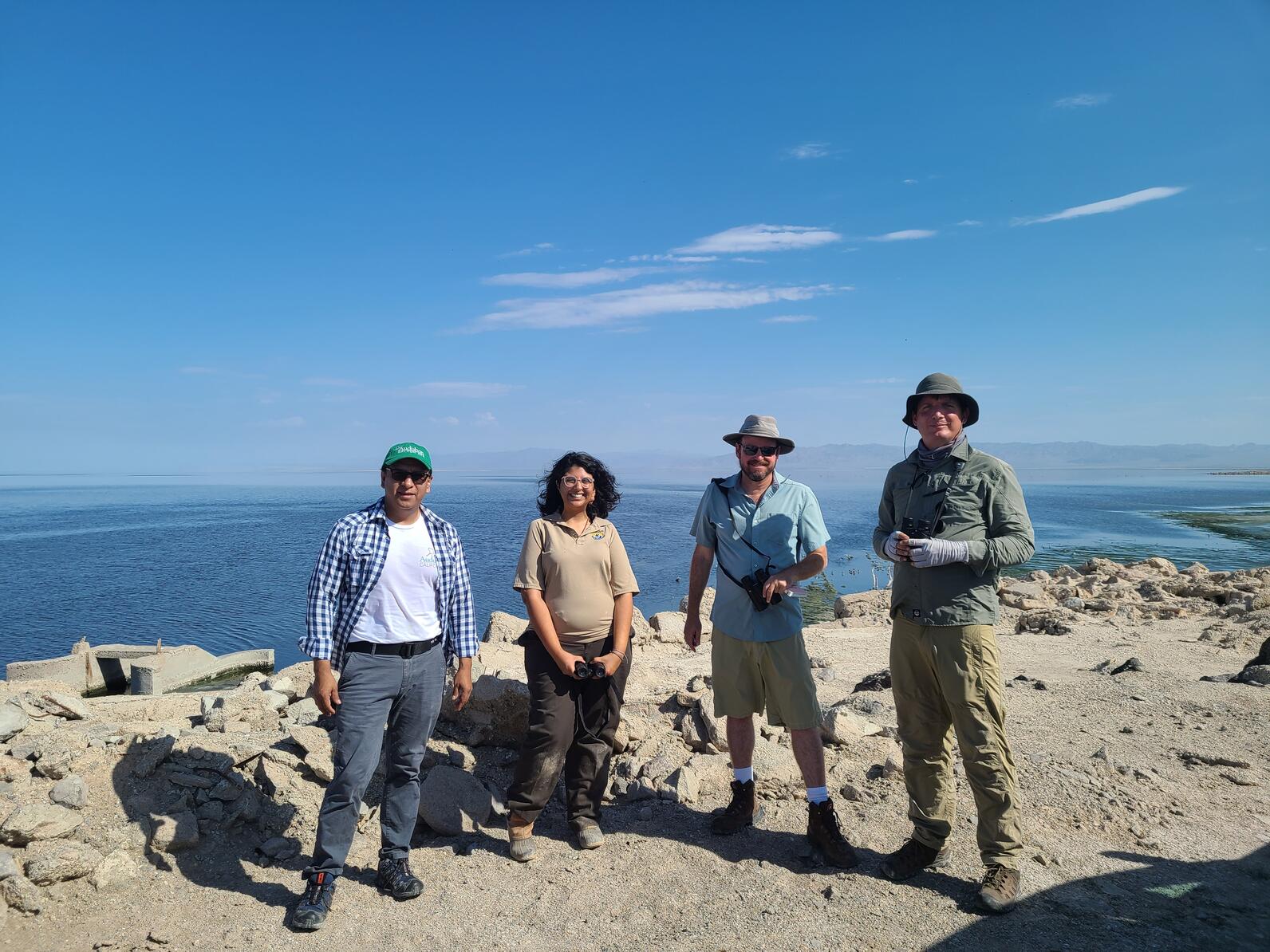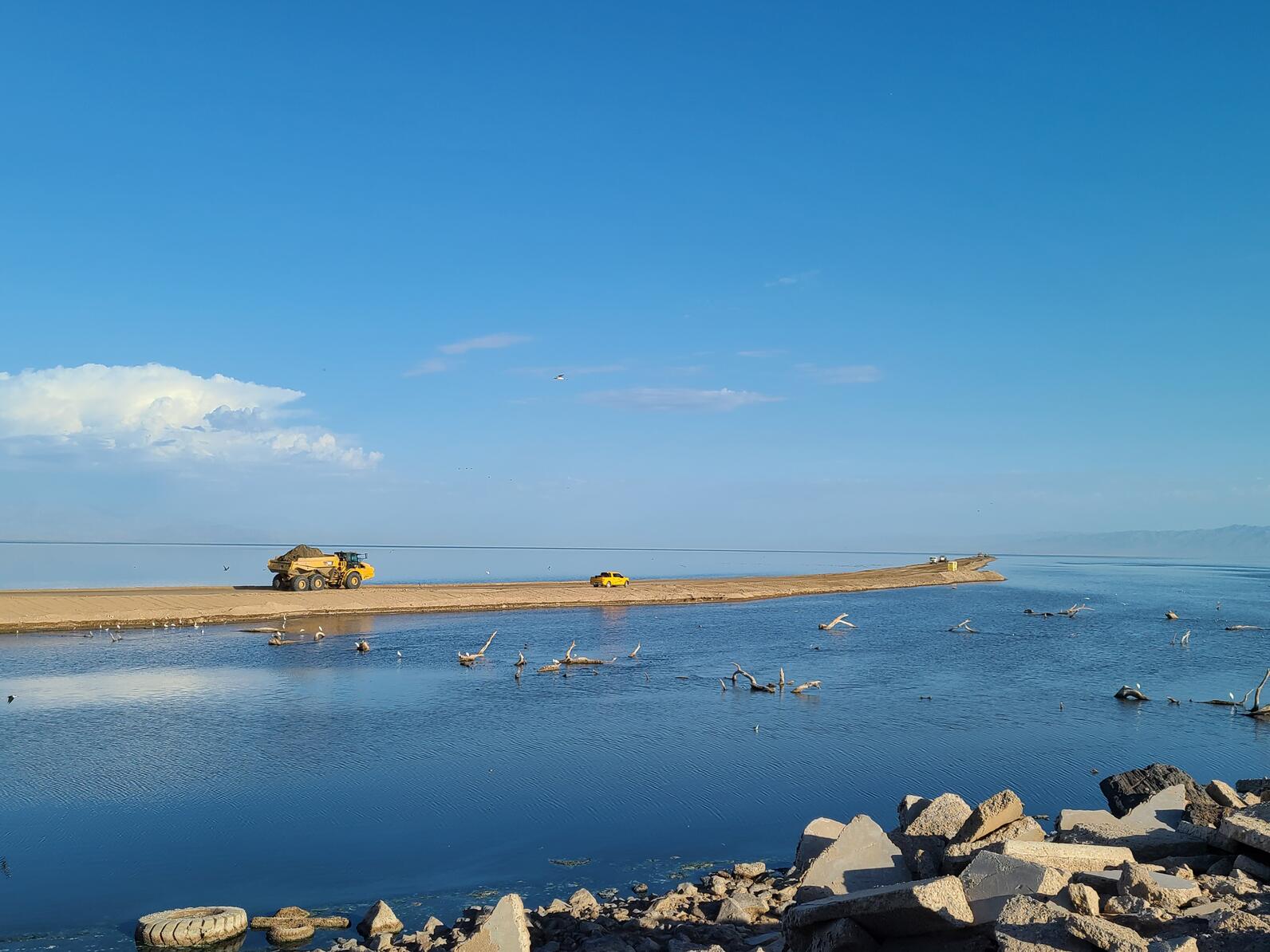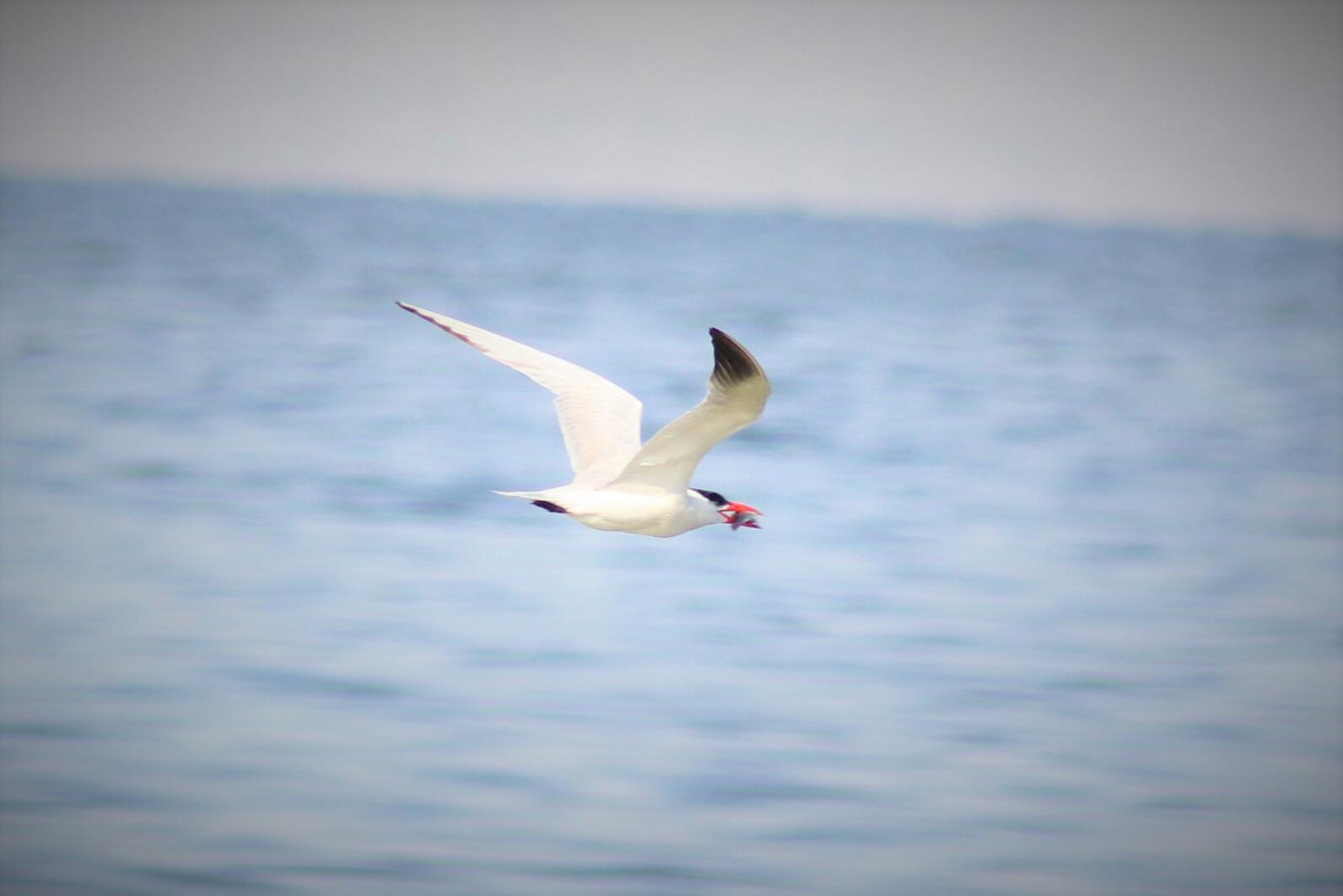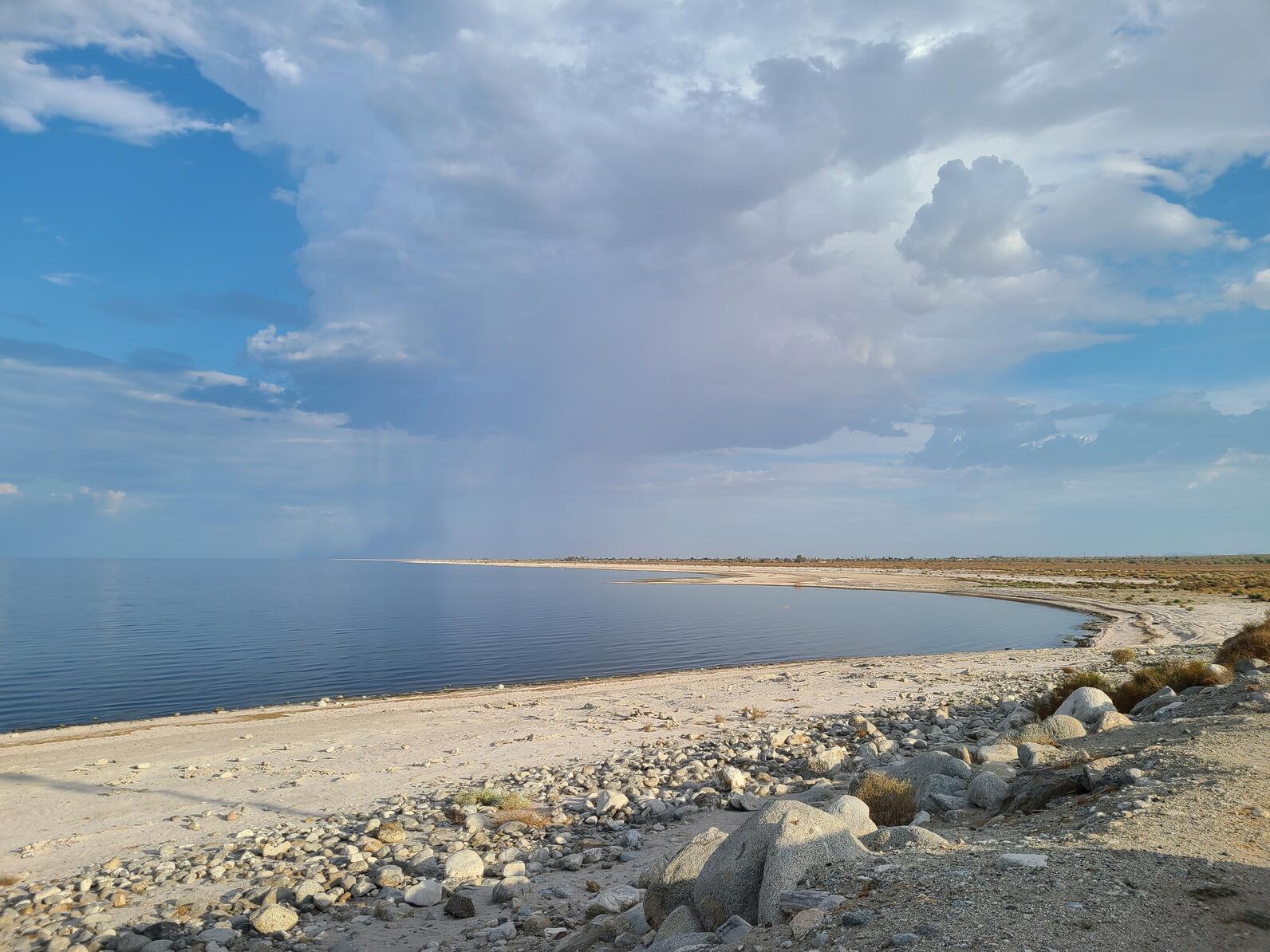
#birdstellus
After a year and half of pandemic-imposed absence at the Salton Sea, I was itching to get out there again and see it for myself. Frank Ruiz, Audubon’s Salton Sea Program Director, was able to continue Audubon’s waterbird surveys over the previous 18 months of Covid-19 restrictions, but I missed seeing it first-hand. I wondered how bad the conditions would be. Would it be “code red” for birds? With the Sea shrinking because of water diversions, made worse by a drought year, would conditions be so extreme that we wouldn’t even be able to see the Sea’s edge? How bad would it smell? Would the wetlands have dried up?
So in mid-September, I set out for the Sea, joined by Frank as well as biologists Dan Cooper and Luke Tiller. Prepared for dry and hot conditions, we circumnavigated the Sea, stopping at Audubon’s waterbird survey points. Overall, I was pleasantly surprised and we experienced the relief of monsoonal rains. While what I saw was a Sea very much in need of repair and conditions continuing to worsen for communities and habitats surrounding the Sea, many of the birds are still there, just a little harder to find and birding sites are much less accessible.
The Good
Birds tell us when conditions are still favorable for wildlife at the Sea. In areas dominated by agricultural drains and their associated wetlands, we observed waterbirds by the thousands where agricultural runoff hits the Sea and deposits a pocket of fresher water. Sandpipers, on migration between the Arctic and points south, were found grouped in these areas, picking in the mud and algae for what must be an abundance of insects. Ducks such as the Northern Shoveler were beginning to gather just offshore, fresh off arriving for the winter from their northern wetland breeding grounds. A late summer visitor, the Black Tern, was a pleasant surprise, numbering in the hundreds. Usually entirely black, during migration their bellies are speckled black and white as they grow their winter feathers, creating a striking image as they hovered low along the water’s surface looking for small fish.
The Bad
At the southern end of the Sea, its shrinking shoreline is the most apparent, with vast stretches of dry playa (dry lake bed) punctuated by the occasional dead tree. Wetlands along the southwest corner of the Sea have shrunk and the shoreline has become so inaccessible that even through a scope, in some areas the ability to identify birds as more than ducks bobbing on the shallow water surface was next to impossible. The former sea wall, a levee of rocks built up long ago to contain the southern end of the Sea and a known spot for bird watching, today offers little in the way of bird life without spotting scopes scanning in the distance because the water’s edge has receded so far.
The shoreline along the eastern and western edges, in places like Desert Shores and Salton Sea State Recreation Area, have not receded as much and afford a good vista of the Sea where you can almost imagine what the Sea was like back in the day. However, these shorelines are fairly absent of birds as compared to the drains. The increase in salinity has reduced food resources, particularly fish, and made much of the Sea unfavorable for birds. Most birds concentrate along the northern and southern ends of the Sea, where freshwater provides more fish and insects and enters the Sea from desert washes and agricultural drains.
The Hopeful
During our survey along the sea wall, we found hope as we scanned for birds. Tractors and trucks were moving dirt and building levees! This is part of the California Department of Water Resources habitat project called the “Species Conservation Habitat Project”, a 4,000-acre restoration to build wetlands and ponds on the dry playa. After considerable delays that have contributed to reduced habitat and bird populations and dangerous dust emissions, we hope to see this new area full of water and birds in 2023 to help sustain life at the Sea and abate some of the dust pollution.

Our survey team did not spot many fish-eating birds, such as White and Brown Pelicans, that previously have captured the public’s attention here. However, we heard from Bob McKernan of Oasis Bird Observatory, who was surveying the northern shoreline at the same time, that he witnessed pelicans and terns in a “feeding frenzy”. When I think of feeding frenzy, I think of being in a boat on the open ocean, surrounded by anchovies with thousands of seabirds diving and competing for fish with whales and sea lions. So I asked for proof. Bob’s photos proved it – there was indeed a frenzy of birds feeding in the open water at the north end of the Sea – seabirds diving and emerging with fish in their bills.


Having thought the Sea was basically devoid of fish, Bob’s theory is that recent monsoonal rains may have flushed fish that survive in the irrigation canals into the greater Sea, creating a plume of fresh water. Whatever the reason, we are hopeful! For now, nature has provided a way for some of the waterbirds that once thrived in great numbers of the Sea to still be able to stop here, rest, refuel and then proceed on their journeys. Birds also tell us that more work needs to be done – protecting emergent wetlands with pockets of fresher water, providing locations for communities and visitors to access the Sea and watch wildlife, and considering how to create conditions that support continued food resources for wildlife.
To learn more about where to visit the Sea and look for birds, visit our birding trail map here.






